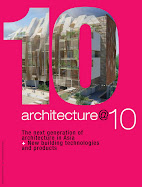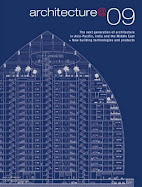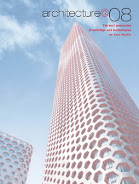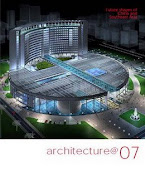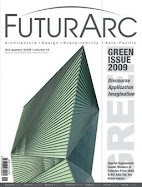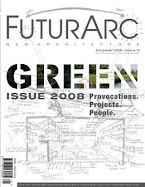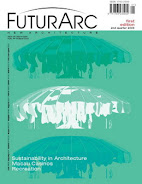
Jakarta’s bus rapid transit system offers hope for the rest of the city’s gridlocked transport network
By Erwin Maulana and Christen Jamar
Getting around in Indonesia’s capital city Jakarta can take so long that web sites have sprung up giving tips on what you can do while stuck in traffic: read or learn a foreign language are among the suggestions. Still others offer advice: make sure you have plenty of water; if you are with children, take some entertainment.
With driving speeds averaging less than 15 kilometres an hour during peak times, and average commutes taking well over an hour, it is no wonder people are looking for ways to kill time.
The city suffers from problems experienced in developing urban centres not only in Asia but worldwide. As the focal point of the Indonesian economy, a combination of urban migration and growing access to cars have created a nasty snarl of traffic as Jakarta’s nearly 9 million residents try to get around the city. Bring in the out-of-town commuters, estimated to swell the city’s population on a daily basis by three million people, and you’ve got the makings of an incessant and impenetrable traffic jam.
Among the many unwelcome side effects of such an unsustainable transportation network are a depressed quality of life, lower productivity and, most importantly, unhealthy air quality.
“Jakarta’s transportation conditions today are approaching crisis level,” asserts Sutanto Soehodho, chairman of the Jakarta City Transportation Council (DTK-J), an urban transport stakeholder organisation, in an interview with FuturArc. He says that Jakarta's main form of public transportation—the city bus system—is currently utilized by only two percent of the population. That is because the buses are over-crowded and uncomfortable; the other form of public transport, a light rail, provides dismal service and an inconvenient network. As a result, most people prefer the solitude and personal space of their cars, even if it means waking up earlier
There have been regular efforts to expand the road network, but ultimately, transport experts say, energy should be directed at cutting down the number of cars. According to Sutanto, the length of the road network increases by one percent each year, while vehicle use is climbing 11 percent annually. If they continue at that rate, he says, “Jakarta will totally collapse in traffic” by 2014.
Finally, in 2004, the government released a blueprint for Jakarta transportation planning, called the Jakarta Macro Transportation Scheme (JMaTS). The plan includes efforts to limit car usage, such as increasing public parking costs, congestion pricing, and the 3-in-1 system (in high-traffic zones, each car must be transporting at least three people). It also includes some road infrastructure improvements, such as widening some roads and building flyovers and underpasses. The scheme’s major infrastructure projects include light rail transit lines (the Monorail) and a subway (MRT). The government is also looking at the city’s waterways for transport.
In the past couple years, though, the city’s public transport golden child has been the TransJakarta Busway, a dedicated bus rapid transit (BRT) line operating on specific city corridors. Launched amid much criticism in 2004, the system has turned out to be an enormous success. It currently carries 100,000 passengers a day, triple the amount it was carrying when it started. Surveys have indicated that 14 percent of Busway riders used to drive; and 80 percent of people asked said they would switch to the Busway system if it was accessible.
Its popularity has led to a rapid expansion—after the first line was launched in 2004, another two started operating in 2005, and yet another four in January of this year. By 2010 the government intends to have 15 corridors in operation, covering a total length of 159 kilometres, according to the DTK-J.
The reasons for the Busway’s success are clear. First, it is an easy, and perhaps more importantly, cheap system to get up and running quickly—the construction required is limited to building shelters and physically separating the bus’s lane from the rest of vehicle traffic. The shelters are clean; the buses are comfortable and are more-fuel efficient. The system has been integrated into the light rail (LRT) coming in from the suburbs and with inter-city bus stations in Jakarta’s suburban towns. Plans are in place to integrate the system further with the monorail, subway and water-based transport systems.
Sutanto agrees the Busway is the best way of alleviating traffic quickly in Jakarta. “One bus can carry 80 people. Sixty-five cars would be needed to carry the same number of people,” he says.

The Busway, he says, is a “compromising technology,” providing a solution that provides immediate relief and gives the city time and money to develop the rail-based systems gradually. “We cannot implement expensive technology in a short time. We don’t want to implement high technology if the people cannot afford the ticket,” he says. He hopes in the future that affordable rail projects will take further pressure off the roads. In fact, he says, the planned north-south MRT subway line is actually intended to replace the Corridor 1 Busway line.
But the Busway has had some growing pains. The system includes feeder buses to give access to people who are not within range of Busway corridors. However, the feeder buses are the more expensive express buses, so while the Busway itself is cheap, getting to it can be costly. Also, there are not enough feeder buses, nor do they run promptly enough, to ensure the optimal use of the Busway system. That has led some to say expansion plans should be put on hold until the feeder systems for the current Busway corridors are optimised.
Also, according to Sutanto, there remain larger, more institutional challenges to the city’s transportation planning. First, Sutanto points out that the JMaTS is only a series of recommendations at this point. “(It) has to be government policy. We need (legislation) to ensure the sustainability of transport development.” Establishing one single independent transportation authority that brings together all the stakeholders—including police, public works, city transport authorities, consumers, and users—would make planning more efficient, he adds.
Still, the TransJakarta Busway—and the rest of the JMaTS—demonstrate initiative on the part of government and the private sector to come up with creative solutions to the city’s gridlock. The system, which followed a similar transport solution in Bogota, Colombia, has become the model of improving public transportation quickly for cities elsewhere in Indonesia and Asia. Bangkok, for one, is looking into developing a bus rapid transit system.
So even though there may be some hitches in the system, the Busway offers residents hope that in the future they may not think of the daily commute as a time to catch up on old correspondence.
(Taken From: http://www.futurarc.com/this_edition/busway_moves.cfm)
© Copyright 2007 FuturArc. All rights reserved. Reproduction in whole or in part without permission is prohibited.
Read More.....









